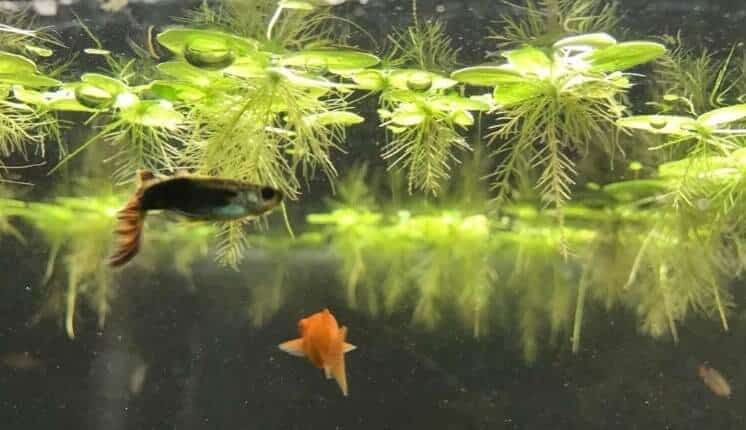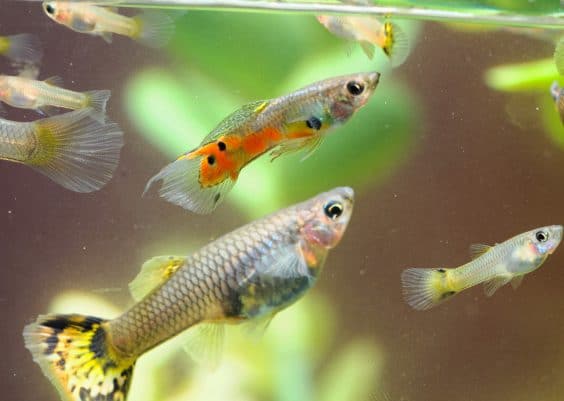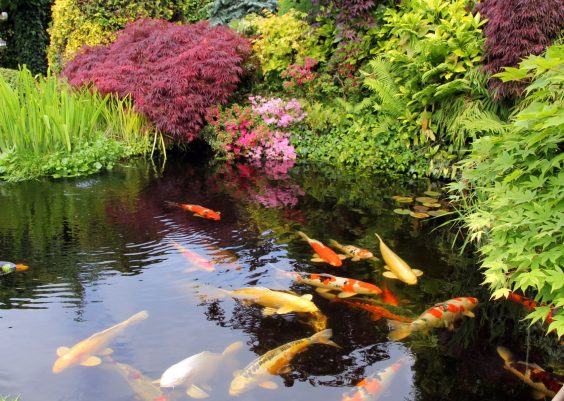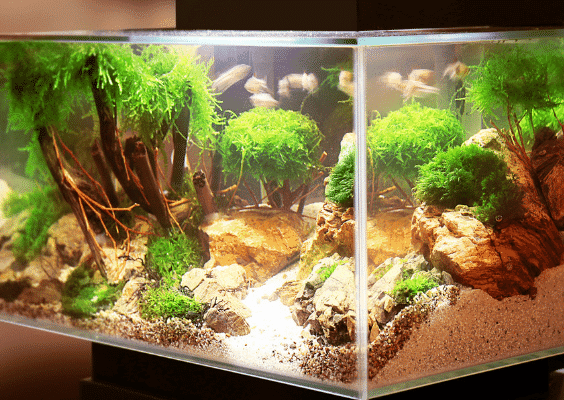Contents
Floating aquarium plants can add a totally new dynamic to your aquarium. They are the best recommendation for aquarists who want to enhance the overall aesthetic of their fish tank.
The best floating aquarium plants provide a natural and wild feel, in addition to creating a range of amazing benefits to your aquarium condition.
In this article, we’ll walk you through how they can be useful to your tank and suggest some of the best floating aquarium plants available today.
Benefits of Adding Floating Plants to Your Fish Tank
Easy to Grow and Need Little Maintenance
Even though most fish keepers are fond of introducing plants to their aquariums, few have time, money, or green thumb to do that.
Several plants need excess lighting; others require a high nutrient intake. Therefore, you need to pay more attention to them.
That’s where the magic of floating plants comes in handy.
Most floating plants need no excess effort. You just need to prune back overgrown plants. They are simple to raise, grow fast and require little maintenance.
Offer Cover and Shade
Floating aquarium plants can create shade for your fish. Some fish species, such as betta fish, love lots of shade.
Duckweed can work to de-stress your fish, providing it a familiar environment that it feels comfortable with.
Floating plants such as Amazon frogbit also create an ideal place for your fish to hide. Dwarf shrimp and krill like foraging amongst the roots of these plants, improving their wellbeing and quality of life.
Moreover, the cover by such plants will aid in protecting your fish from the aquarium lights during the day.
Maintain Stable Water Chemistry
Floating aquarium plants will develop very fast, making them a perfect way of mitigating damaging waste from your tank, such as nitrate, without any effort.
The plants absorb these toxins as nutrients, effectively eliminating them from your fish tank and helping your plants thrive.
This can save you from the hassle of changing your water when nitrate becomes a problem. Floating plants can work as a cost-effective, low-maintenance method to filter your water.
Additionally, floating plants can help keep your fish tank well aerated. They exhale on a regular basis, supplying oxygen to your aquarium, thereby improving your fish’s health.
That way, the chemistry of your water is maintained stable – without the need for pricey filtration systems.
Supplement Your Fish’s Diet
Floating plants thrive quickly, so they are perfect for fish who like snacking on live vegetation.
As you put floating plants in your aquarium, the risk of your fish being underfed is decreased significantly because they get a second, automated food source. Plus, this food source also offers nutrients that synthetic food may not, supporting in balancing your pet’s diet.
Give Your Tank a Wilderness Appearance
Floating aquarium plants provide you the sentiment of a wilderness, with some of them having toots hang down freely. Generating a natural-looking condition will contribute to the beauty of the aquarium, as well as help your fish feel happy and comfortable.
Best Floating Aquarium Plants
1. Floating Bladderwort
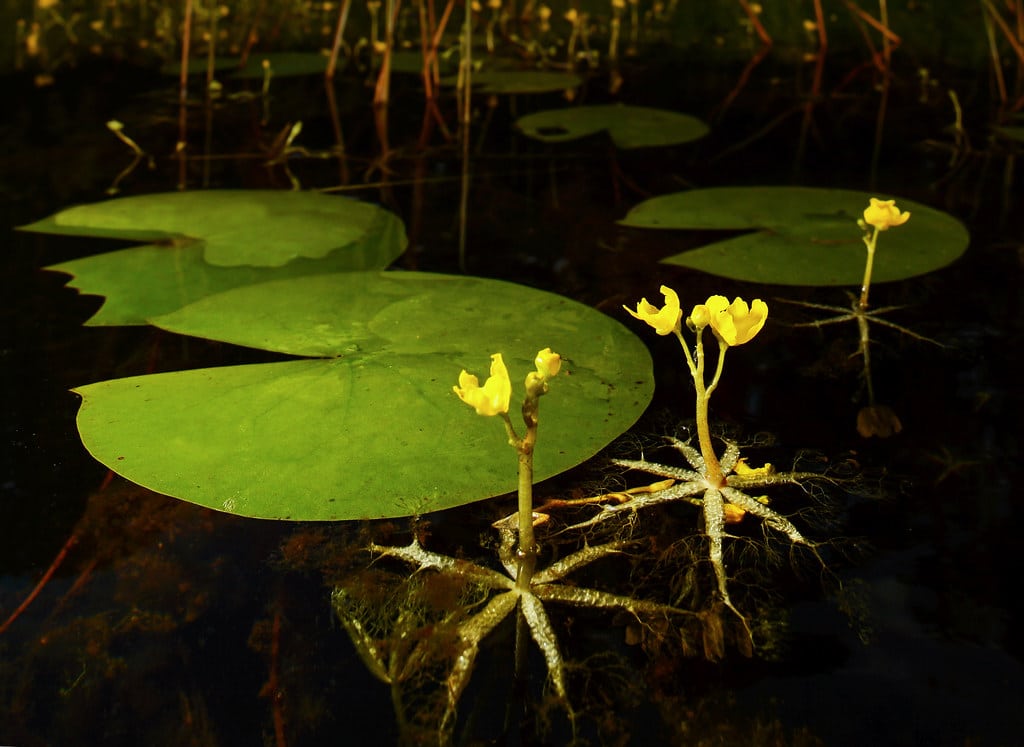
Floating bladderwort is a unique carnivorous plant that will feed on tiny microorganisms called zooplankton. They also tend to eat invertebrate larvae, aquatic worms, and water fleas.
This carnivorous behavior is a great adaption to developing in nutrient-deficient conditions. The plant will receive organic nitrogen and phosphorus from this predation.
The plant floats and thrives on the surface of the tank water. It flowers with bright yellow blooms, making your aquarium lively and colorful.
2. Hornwort

Hornwort is easy to care for and has a fantastic look. It is one of the go-to options for aquarists who want to keep a planted tank without the hassle.
The plant has a decently deep green color that completely changes the lighting situation in your fish tank. The leaves growing out of the thin stems also have an interesting whispy look.
You can pair this floating aquarium plant with any species. Apparently, you should conduct your research into the fish you keep before making the decision, but this plant is a quite safe option.
The only thing about hornwort you need to watch out for is its growth rate. As you will be using it as a floating plant for your aquarium, you need to pay attention to it. If you ignore it for a long time, it might cover the surface and clog up your equipment, such as filters.
3. Duckweed
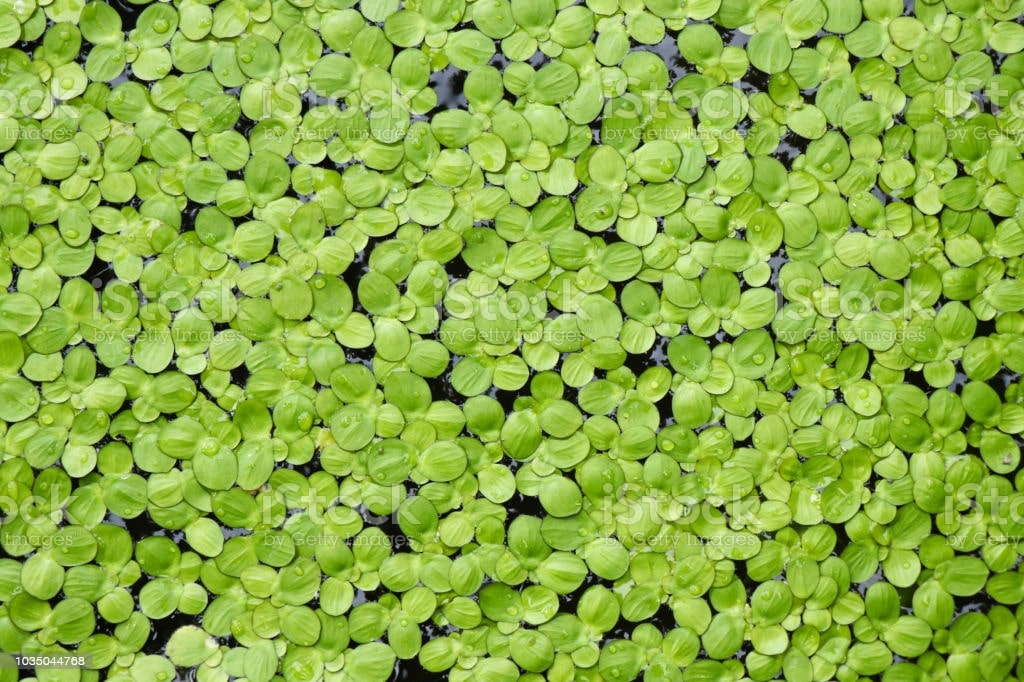
Duckweed is a proper floating aquatic plant that can flourish in almost any environment. The small leaves will rapidly grow and cover the surface in a special green pattern. It will look neat from above but even more interesting from below the surface.
Before you introduce duckweed to your tank, you need to take its growth rate and durability into consideration.
While those might seem good traits, it also makes this plant improper for some aquariums. If the critters in your tank require a great amount of light or ample access to the surface, duckweed might not be an ideal option. You will need to constantly trim it away to keep your aquarium livable.
If that is not going to raise a problem for you, this plant is worth trying. It’s a breeze to keep alive and provides a beautiful look to any tank.
Looking into the aquarium from above, you’ll see a mass of stunning small green leaves across your tank, slightly breaking whenever a fish surfaces, looking natural and amazing.
4. Water Lettuce

Water lettuce is a fast grower, so care requires to be taken so that it won’t overrun your tank.
With large leaves, it likely blocks out a considerable amount of light to the water below, but again only if the tank becomes overrun, it requires a severe lack of care for that to occur.
Its long branching roots build wonderful nurseries and hiding places for numerous species of fish. These roots help in the artistic and natural look of a fish tank.
5. Rotala Indica
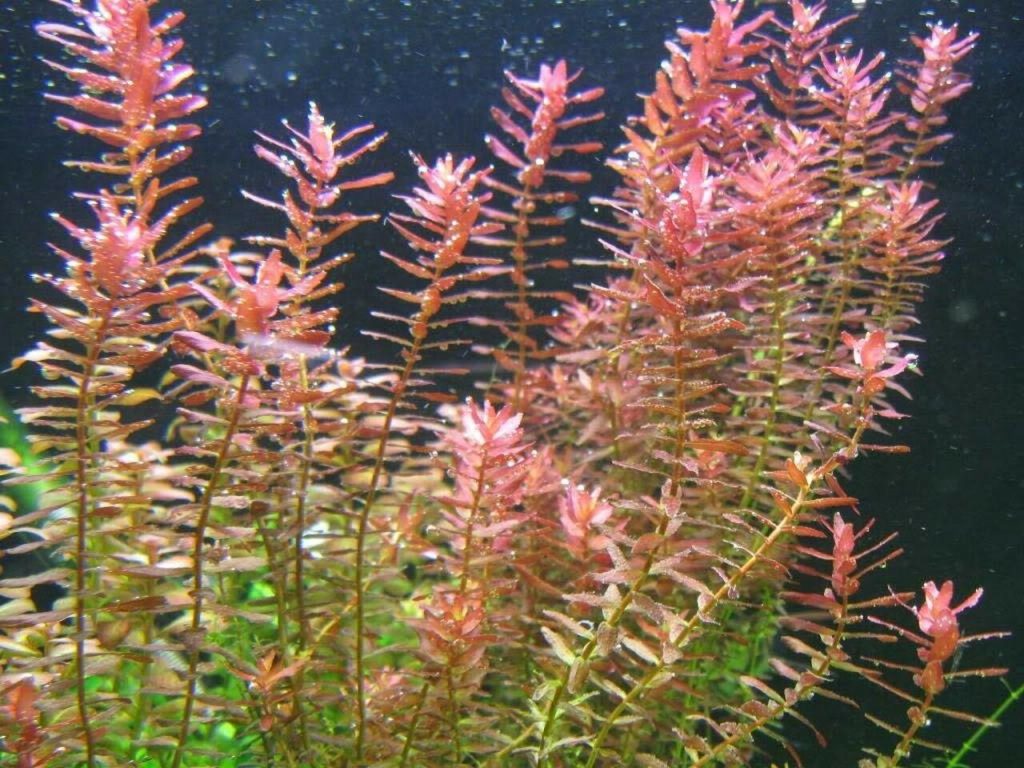
The special thing about this floating aquarium plant is the coloring of the leaves. On top, you’ll find a relatively unremarkable green look that doesn’t stick out. However, the bottom of the leaves is very interesting.
The bottom is pinkish-red, which gives a ton of contrast when compared to the rest of a typical tank (especially underwater). While that might not be the biggest advantage at first, it will change as you add some movement.
A current of fish swimming through the leaves forms this wave-like effect of color, making it a striking floating aquarium plant.
Rotala Indica is a straightforward plant to take care of. However, you do need to protect the stems and be cautious with trimming.
6. Java Moss
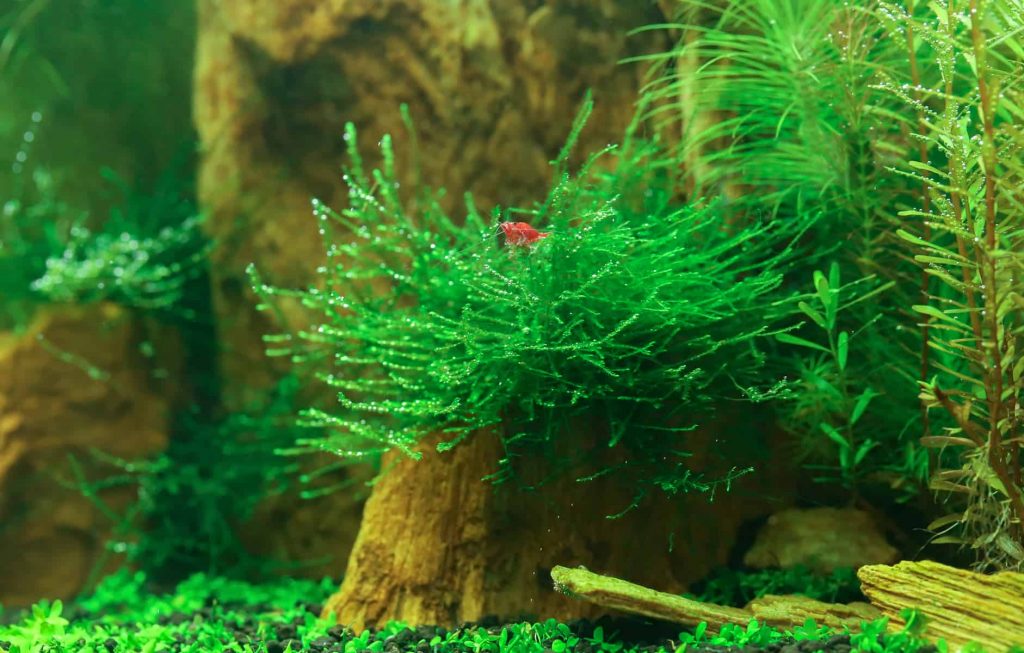
Java moss often grows along rocks, driftwood, and similar surfaces, including rear glass.
Java moss is a densely growing plant. It has a biofilm that is a thin, slimy layer of bacteria adhering it to surfaces. Besides, it offers hiding places for your fish, as well as security for younger critters.
This floating aquarium plant does not need any special lighting and can be kept in any freshwater tank. It is simple to raise and grow at a controllable rate, based on the amount of light it gets.
Moreover, you can also choose to root the plant or leave it to float freely.
7. Amazon Frogbit

If you’re looking for an exemplary floating aquatic plant with fascinating long roots and large rosettes, then you come to the right place.
Amazon frogbit is fairly easy to develop and nurture, which can withstand a wide range of temperatures.
If you’re having difficulty in the roots stalling out in your filter, you can try binding the frogbit to one side of the aquarium. You can do this by connecting angling wire to suction containers and putting the aquarium plants in this “assigned” space. Thereby, they cannot float in the direction of your filter.
8. Water Spangles
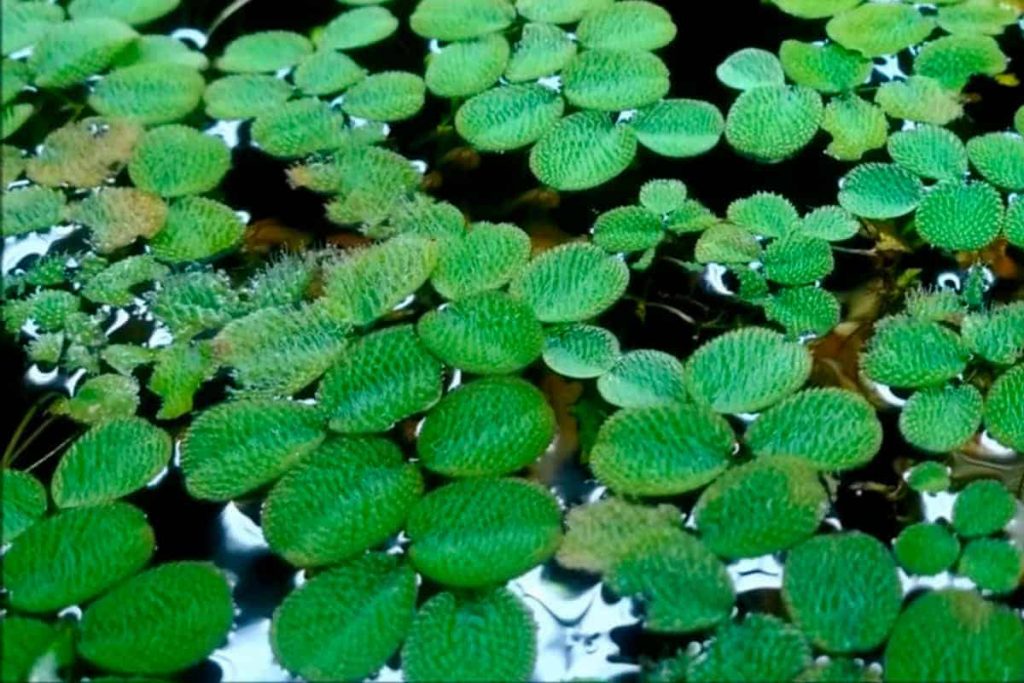
This is another beautiful floating aquarium plant for your tank, coming with twelve spangles, with each of them having up to six leaves.
These plants are strong and can live in various water conditions. However, if you want to keep them inside, you will have to set up a special aquatic aquarium light.
Water spangles can be a great cover for bettas who don’t really like the sunlight. In addition, they can act as a good source of food for both herbivores and omnivores.
These plants typically feed off the supplements in the aquarium water, stopping the growth of algae.
9. Riccia Fluitans
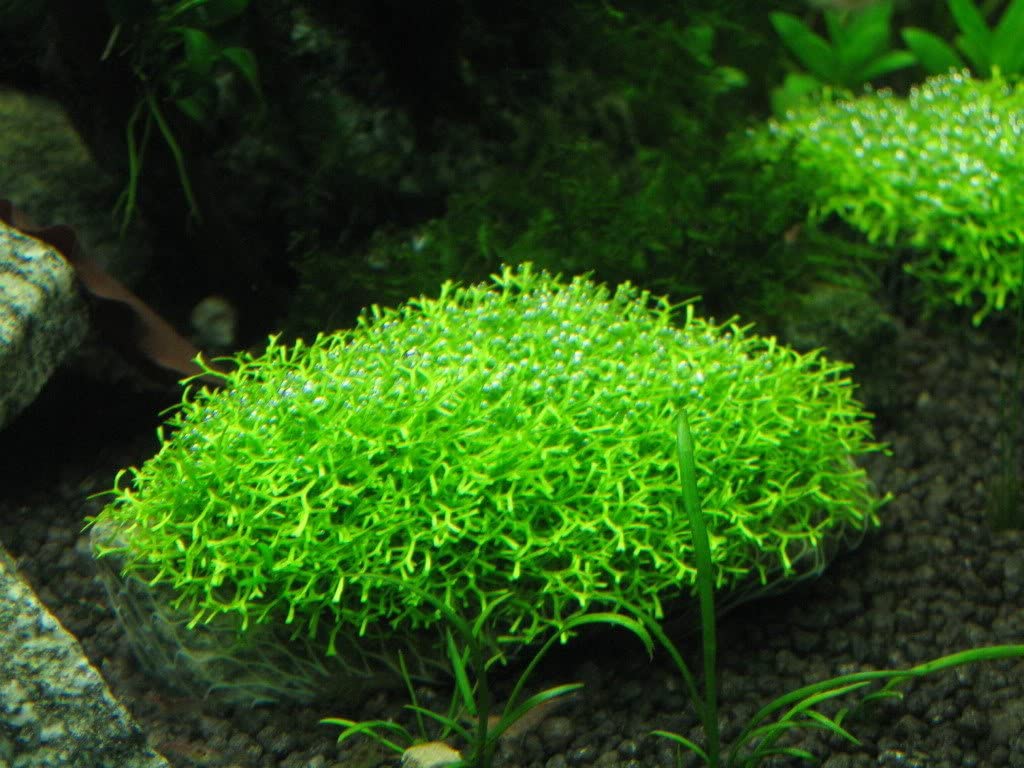
This floating aquarium plant contains short strand-like pieces that interlace together, generating a fitting mat. It has no leaves or roots. It is not usually seriously affected by lights near the surface of the water as it stays below the surface or level with it.
Riccia fluitans is popular with betta breeders because it is simple to grow and provides shade for fry and surface breeders.
What’s more, aquascapes use this floating plant to recreate moss. Bunches of it adhere to rock and wood with thread or nylon netting. It grows throughout the net and appears a stunning yellow-green moss.
You should keep trimming the plant near the netting, or else clusters of it will sever and float to the water surface. Since the plant is grown this way, it needs far more concentrated light.
10. Red Root Floater
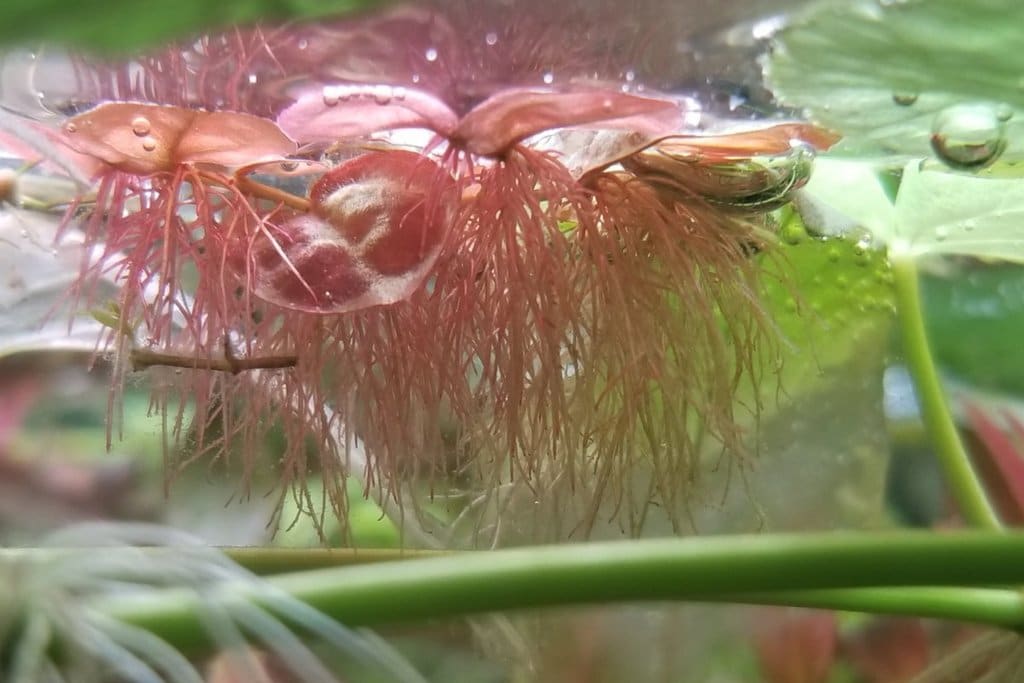
Red Root Floaters are lovely little floating ferns that will thrive to cover the entire surface of the water in your tank.
This is an extremely fast-growing plant that will take over the aquarium and block all the light from the plants beneath. Hence, you must be prepared to thin out the plants if needed.
The fantastic green and red leaves prosper on the water surface, sending out long, dark red roots that dangle down to receive nutrients from the water column. Sometimes, the plants create delightful white flowers when given optimum growing conditions.
11. Water Wisteria

Water wisteria is super easy to grow, making it an appropriate choice for a novice to the fishkeeping hobby. It is also a versatile floating aquarium plant that can float on the surface of the water or be anchored in the substrate.
You’ll need a relatively big aquarium for these plants to be happy, as they can grow up to 20 inches high and spread up to 10 inches. Nevertheless, if you set the lighting levels low, the plants won’t flourish that large, and moderate pruning will aid in keeping them under control.
12. Brazillian Pennywort

Brazillian Pennywort gets its common name from the dime-sized leaves that develop along vine-like, creeping stems. This plant sends out small white roots and produces tiny white flowers when reaching the water surface.
It’s possible to grow this plant anchored in the substrate or let it float freely on the water surface. As planted in the substrate, Brazillian Pennywort will always develop towards the surface, so it can be used as an appealing curtain effect at the sides or back of the aquarium.
However, remember that the taller the stems, the lower leaves drop-offs, because they are shaded by the foliage.
13. Water Sprite

Water Sprite is a delicate, beautiful plant, which is also called Indian Fern, Water Fern, or Indian Water Fern.
You can grow this plant in the substrate or leave it to roam freely as a floating plant. As a planted specimen, Water Sprite can be used as a handy filter plant to plug gaps in your tank and is proper for the midground or background.
This floating aquarium plant is simple to control and requires little trimming. Propagation naturally happens through adventitious shoots, but can also have new plants by sipping cuttings from the main stem. You can plant the cuttings in the substrate or let them float on the water.
14. Azolla
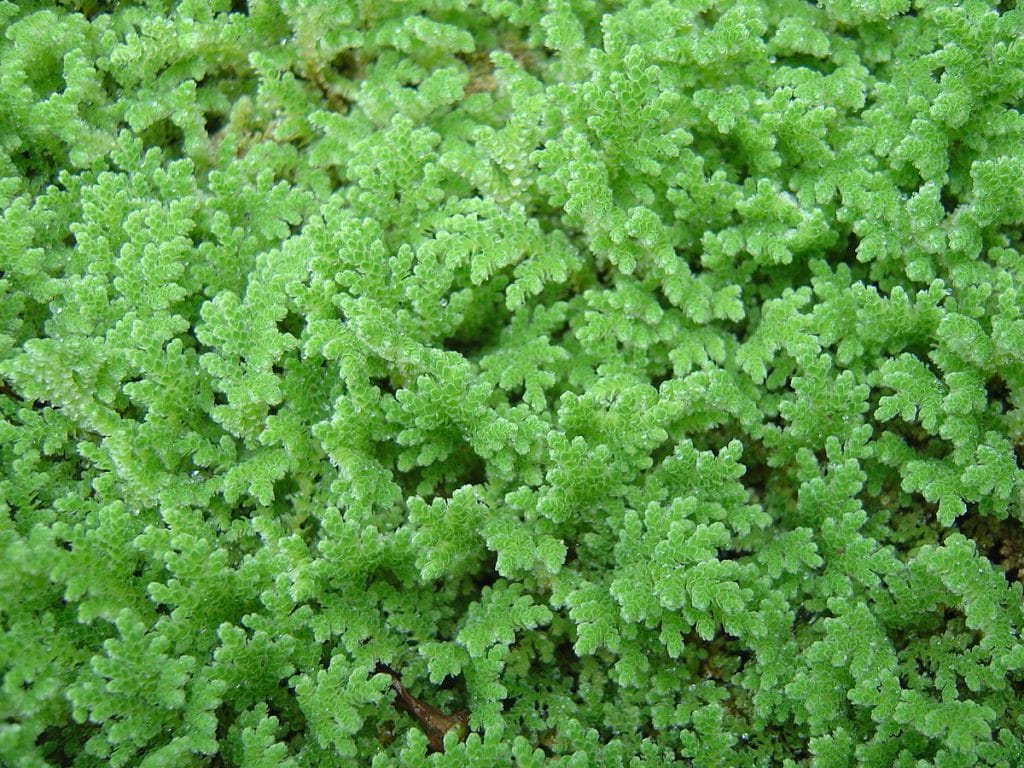
Azolla is native to North America, ranging down to Central America, where it is also called Carolina Mosquito fern and Water Velvet.
The plant is often cultivated for use as a fertilizer since it can take in and store huge amounts of nitrogen compounds from the water. Plus, it is used in fish food and poultry production.
In the aquarium, Azolla thrives fast, sending out runners to self-propagate. New plants are placed at the end of the runners, gradually detaching themselves. Everything you need to do to generate a new specimen is to snip a baby plant from the runner and leave it to float freely in the fish tank.
15. Ludwigia Repens
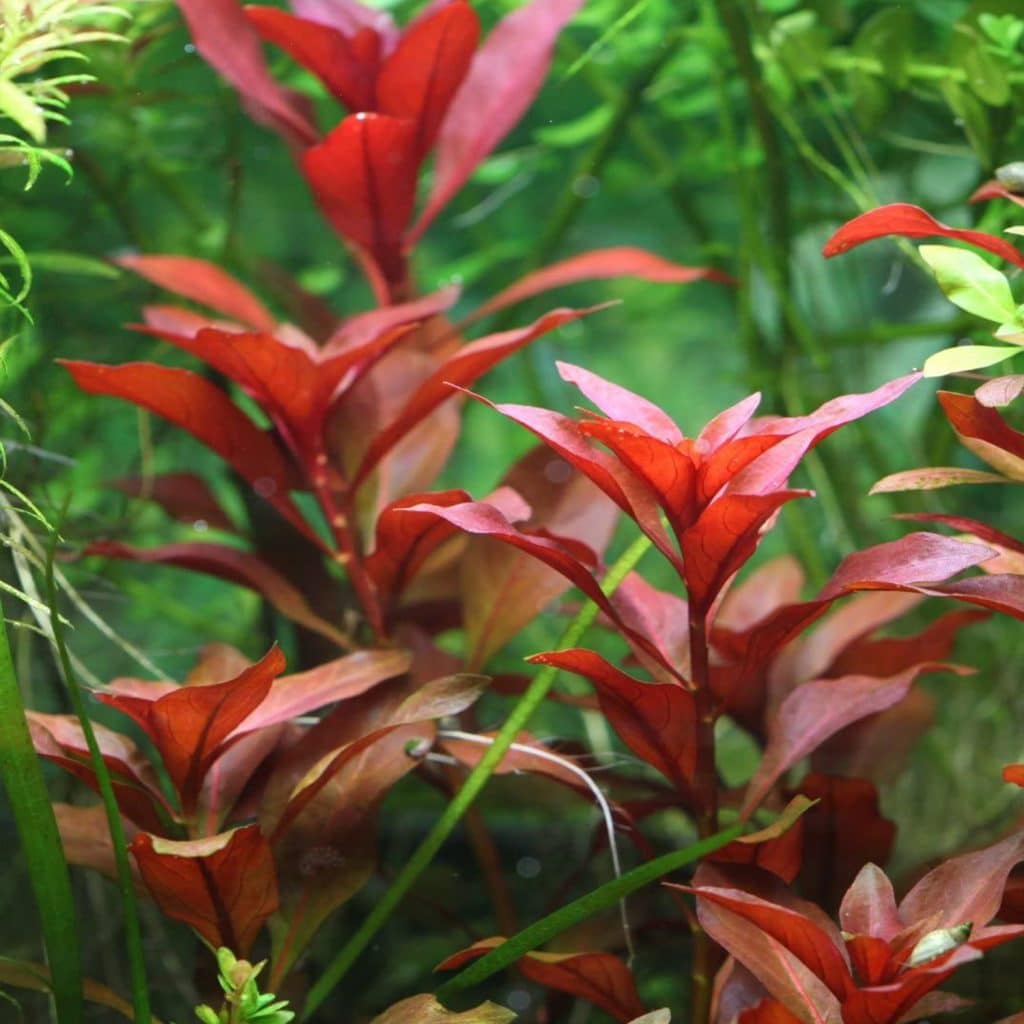
Ludwigia repens is an aquatic plant that comes from the same family as the Evening Primrose.
The plant is also called Creeping Primrose-Willow and is found developing wild throughout various parts of America.
In the tank, this floating plant is a delightful and versatile plant. You can raise the plant completely submerged and anchored to the substrate or floating freely on the surface of the water. Its color ranges from dark green to red and reddish-brown, depending on how submerged the plant is.
16. Anacharis

Anacharis is a common floating aquarium plant that is easy to grow and flourishes in a large range of conditions. The plant has a lush dark green color and can be kept on the substrate or floating freely in the water column.
In natural environments, the plant grows perennially in ponds, lakes, and slow-moving waterways. Intriguingly, Anacharis rises and falls depending on the temperature and the time of day. If it’s warm, the plant reaches the surface where it can absorb the sunlight, sinking again when the weather becomes cooler at night.
In summer, this plant produces a marvelous white flower that rises above the water level.
Closing Thoughts
Floating aquarium plants can be a spectacular, functional decoration to any tank. Some plants get all the nutrients they require from the tank water, absorbing nitrates and keeping your aquarium safe for your fish. Meanwhile, some provide ideal shade for shy fish and fish fry.
If you know any plant that is not included in the list, please share it with us in the comment section. We want these recommendations to be as useful as possible and would like to add more amazing plants.

